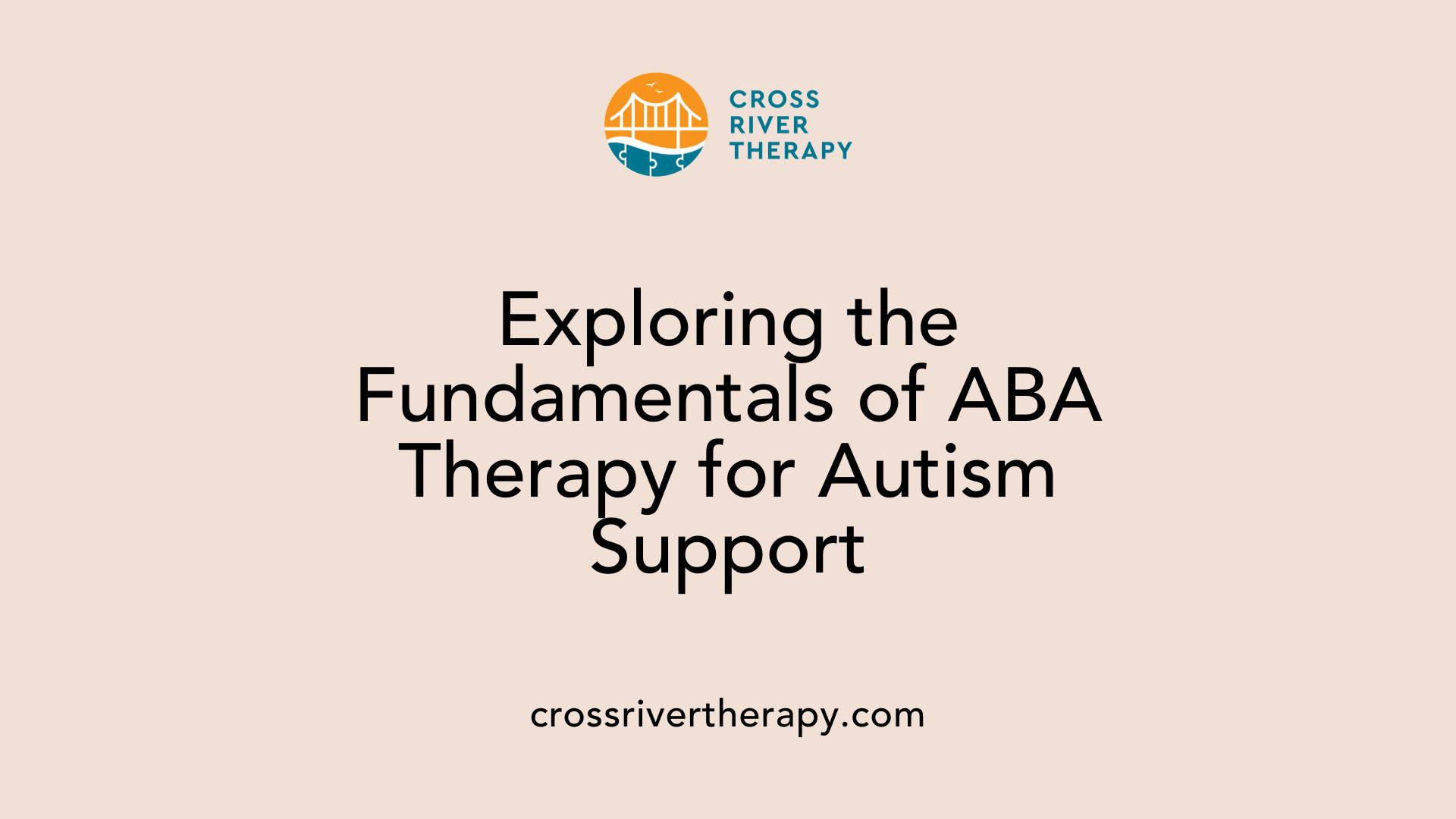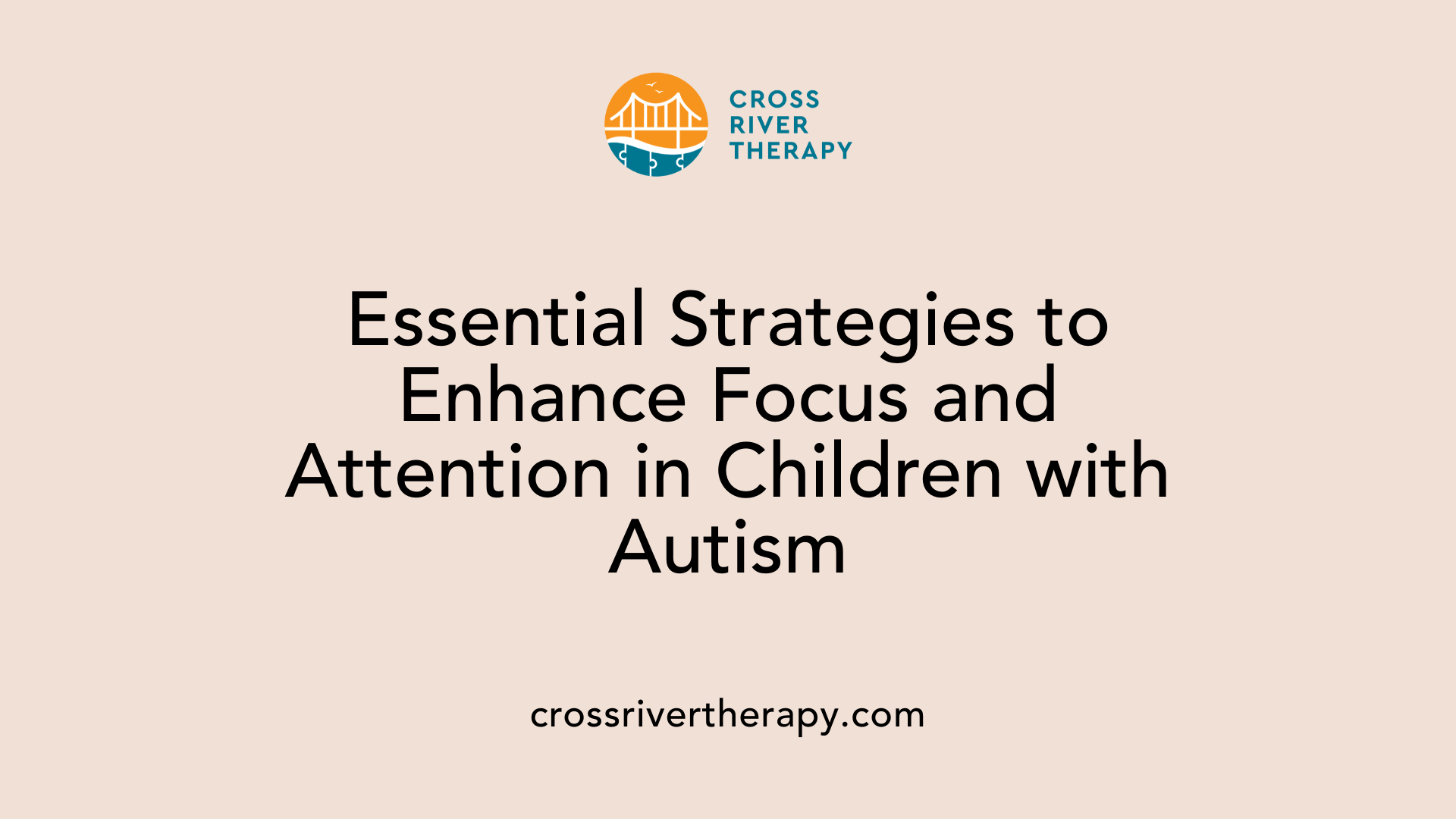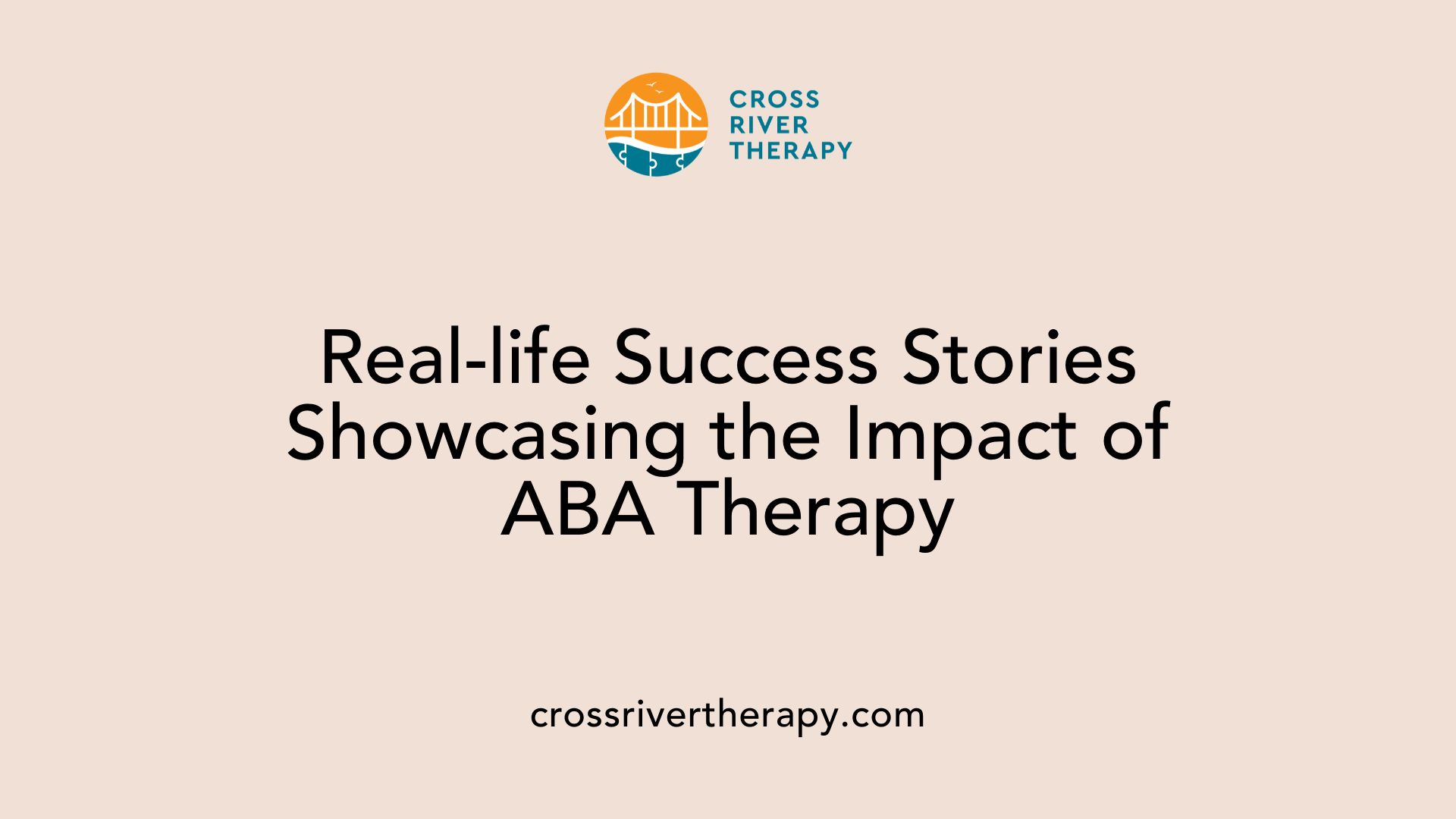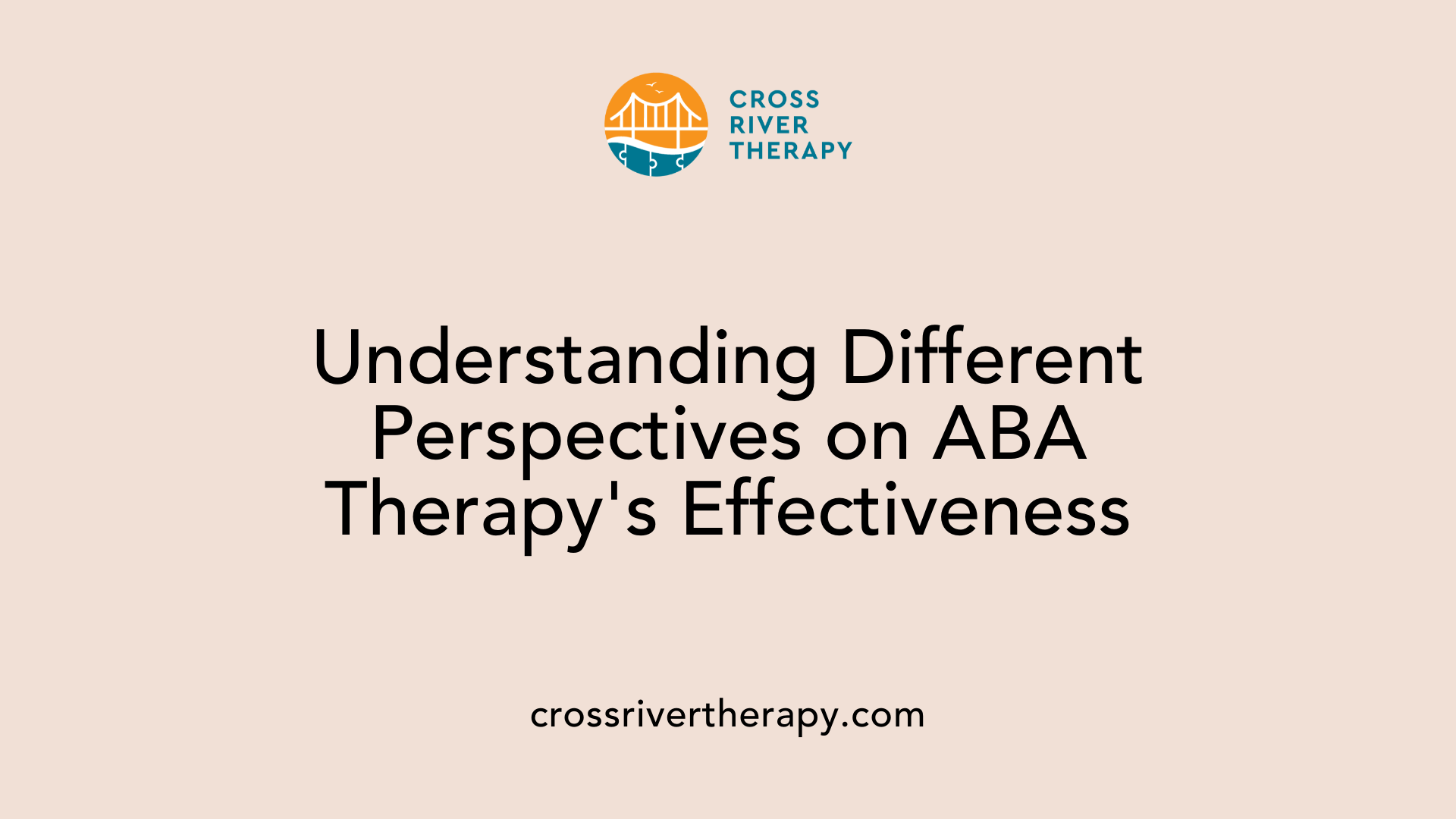How ABA Therapy Can Improve Focus and Attention in Children with Autism
Harnessing ABA Therapy for Enhanced Focus in Autistic Children
Introduction to ABA Therapy and Focus Improvement
Applied Behavior Analysis (ABA) therapy offers a structured approach to aid children with autism in enhancing a wide array of skills, including focus and attention. By utilizing well-researched strategies derived from the science of learning and behavior, ABA therapy is dedicated to increasing helpful behaviors, such as sustained attention, while minimizing less beneficial ones. In this article, we delve into the methodologies of ABA therapy, exploring how it supports autistic children in developing these crucial skills and what sets modern practices apart.
Understanding ABA Therapy

What is ABA therapy?
Applied Behavior Analysis (ABA) therapy is a research-based approach focused on understanding and modifying behavior using principles of learning theory. Its main goal is to increase positive behaviors and decrease harmful behaviors, especially in children with autism and related developmental disorders.
ABA therapy employs techniques such as positive reinforcement, where rewarding a behavior enhances its likelihood of being repeated. Through tools like Discrete Trial Training (DTT) and the Antecedent-Behavior-Consequence (ABC) model, the therapy effectively teaches new skills and improves communication. These evidence-based interventions lead to notable enhancements in socialization, language, and daily living skills for many children.
Techniques used in ABA
ABA therapy incorporates various proven techniques tailored to meet the individual needs of each child. Here’s a brief overview of its core strategies:
| Technique | Description | Benefits |
|---|---|---|
| Positive Reinforcement | Rewards for desired behaviors increase their occurrence. | Enhances focus and motivation in learning activities. |
| Discrete Trial Training | Short, structured learning sessions that develop attention skills. | Systematic progress in skill acquisition and retention. |
| Creating Engaging Environments | Structured, calm settings minimize distractions. | Improves focus and emotional regulation. |
| Utilizing Interests | Activities connected to the child’s interests enhance attention. | Increases engagement and attention span. |
| Task Breakdown | Breaking tasks into smaller parts reduces overwhelm. | Promotes sustained focus and gradual skill building. |
| Creating Calm Spaces | A controlled environment assists in managing sensory inputs. | Reduces anxiety and fosters better concentration. |
By employing these targeted strategies, ABA therapy demonstrates its effectiveness in helping children with autism develop stronger attention spans, ultimately leading to improved academic performance and social interactions.
The Core Techniques to Boost Focus and Attention

What are some strategies used in ABA therapy to support children with autism in developing better focus?
ABA therapy employs several effective techniques to help children with autism enhance their focus and attention. Positive reinforcement is one of the cornerstones of these techniques; by rewarding a child for demonstrating desired behaviors, such as maintaining eye contact or following instructions, they are more likely to repeat those behaviors. This method creates a motivational environment where children learn through encouragement and positive feedback.
Addressing sensory input distractions also plays a crucial role. Many children with Autism Spectrum Disorder (ASD) experience difficulties with overwhelming sensory information. By creating a calm and structured learning environment, distractions can be minimized, allowing children to better manage their focus. For example, using noise-canceling headphones or a designated quiet area can support concentration.
Breaking down complex tasks into smaller, more manageable parts helps prevent feelings of overwhelm. Children can achieve incremental successes, which enhances their confidence and attention span gradually. Additionally, structured learning approaches, such as discrete trial training, provide short, focused lessons that teach skills systematically, improving overall attention abilities.
The integration of children’s unique interests into learning activities can further bolster their focus. Engaging them in subjects they enjoy not only captures their attention but also makes learning enjoyable. Through these carefully tailored strategies, ABA therapy significantly improves the focus and learning abilities of children with autism, enabling them to thrive academically and socially.
Child Engagement and Customized Approaches
How can you improve the focus and concentration of an autistic child?
Improving focus and concentration in an autistic child requires engaging them in activities that resonate with their interests. Utilizing their unique interests not only motivates them but also creates a more enjoyable learning environment.
Breaking tasks into smaller, manageable components is crucial. This approach helps alleviate feelings of being overwhelmed, allowing the child to concentrate better. For example, instead of asking a child to clean their room all at once, guide them to focus on one area at a time.
Effective instructions are also vital. Using clear and concise directions, coupled with repeated keywords, can enhance their understanding and execution of tasks. For instance, when teaching a new skill, modeling the task visually can help reinforce what is expected.
In addition, preparing children for transitions with visual supports can ease potential anxiety and make them more receptive to changes in routine. Incorporating mindful practices can also help children stay grounded in the present, further improving their attention skills over time.
Customizing ABA to individual needs
Customizing ABA therapy to each child's needs means tailoring interventions to their strengths and challenges, particularly concerning focus and concentration. Techniques like positive reinforcement engage children more effectively, making the learning experience rewarding and stimulating.
Moreover, employing structured learning approaches such as discrete trial training offers short, focused sessions that teach attention skills incrementally. Providing a calm and controlled environment also contributes significantly to a child’s ability to manage their sensory input and maintain concentration.
In summary, through targeted strategies that embrace personal interests and systematic instruction, ABA therapy can enhance focus and attention in children with autism, ultimately leading to better learning outcomes.
Advancements in ABA Methodologies
What are the differences between old ABA and new ABA?
The evolution of Applied Behavior Analysis (ABA) therapy has brought about profound changes in methodology and philosophy.
Old ABA often relied on rigid, clinic-based techniques characterized by intensive drills and sometimes even aversive measures to modify behavior. It focused on compliance and achieving specific outcomes, which could create a stressful environment for children and their families.
In contrast, new ABA has embraced more child-centered and naturalistic approaches, such as Natural Environment Teaching. This shift emphasizes customization to meet each child’s unique needs and preferences, ensuring that therapy is engaging and relevant. Families are encouraged to provide input, fostering collaboration in developing treatment plans.
New ABA practices prioritize positive reinforcement by using praise and rewards to motivate behavior rather than punitive measures. This approach respects neurodiversity, celebrating different learning styles and recognizing that behaviors are expressions of individuality rather than problems to be fixed.
Ultimately, modern ABA therapy is more integrated, often encompassing other therapeutic modalities to promote overall skill acquisition and personal growth rather than solely focusing on overcoming undesirable behaviors.
Integration of positive reinforcement with neurodiversity respect
Today’s ABA therapies intricately weave the principle of positive reinforcement with a deep respect for neurodiversity. By framing behaviors within the context of the child’s unique experiences and perspectives, therapists not only encourage desired behaviors but also support emotional and social learning. This holistic perspective acknowledges that children on the autism spectrum can thrive when they are engaged based on their personal interests and strengths.
The integration of these principles allows for a more flexible and empathetic approach, ensuring interventions are not only effective but empowering. Through building a respectful and supportive environment, new ABA methodologies foster increased attention spans and improved emotional regulation in children with autism.
Neuroplasticity and Environmental Adjustments
Neuroplasticity's Role in Improving Focus
Neuroplasticity, the brain's ability to reorganize and form new neural connections, plays a vital role in enhancing focus and attention, particularly in children with Autism Spectrum Disorder (ASD). Just as muscles grow stronger with exercise, the brain can improve its attentional capacities through practice. This means that with structured interventions like ABA therapy, children can effectively develop their ability to concentrate and manage distractions.
Incorporating targeted exercises that enhance focus not only helps in daily learning scenarios but also fosters overall cognitive development. With consistent practice, children learn to adapt their attention and impulse control, critical components for academic success and effective social interactions.
Creating Conducive Learning Environments
The setting in which children learn significantly impacts their focus. By establishing calm and controlled environments, distractions can be minimized, thus allowing children to concentrate better. Providing structured and engaging activities, tailored to align with a child's interests, serves to further enhance attention spans.
For instance, incorporating reading sessions that involve comprehension checks or story-related questions not only captivates a child's interest but also reinforces attention skills. Moreover, the importance of scheduled breaks cannot be overstated; brief periods of stretching or fidgeting help maintain focus over longer tasks.
In summary, a combination of neuroplasticity and carefully curated learning environments lays the groundwork for substantial gains in attention and concentration among children with autism.
Success Stories and Evidence

Does ABA therapy help with improving focus?
ABA therapy has been recognized for its effectiveness in improving focus among individuals with Autism Spectrum Disorder. By implementing structured techniques tailored to the individual’s needs, ABA creates an environment conducive to enhancing attention and concentration. A prominent method used is positive reinforcement, where desirable behaviors are rewarded, thereby increasing their likelihood. This systematic feedback not only helps children learn to sustain their focus but also applies to teens and adults experiencing similar challenges.
Research consistently supports the efficacy of ABA therapy in improving various skill sets, including focus, memory, and social interactions. Studies show that children who participate in ABA programs exhibit significant improvements in their ability to concentrate and engage in learning. These findings highlight the therapy's status as an evidence-based practice, widely recognized for its positive impact on individuals with autism and developmental disorders.
Improvements in multiple domains
ABA therapy is not limited to enhancing focus alone; it concurrently fosters progress in several other areas. Here’s an overview of how it benefits children across multiple domains:
| Domain | Benefits | Description |
|---|---|---|
| Attention & Focus | Improved concentration | Structured techniques help children learn impulse control and manage sensory input, allowing better focus. |
| Academic Performance | Enhanced learning outcomes | By teaching concentration skills, children experience improvements in memory and overall academic success. |
| Social Skills | Better engagement in interactions | ABA teaches social rules through positive reinforcement, helping children stay engaged during social interactions. |
| Emotional Regulation | Reduced anxiety and self-injurious behaviors | A calm learning environment helps manage emotions, contributing to an improved ability to concentrate. |
| Communication Skills | Increased ability to express needs and understand others | Programs include strategies that enhance verbal and non-verbal communication, leading to overall social development. |
Overall, ABA therapy's holistic approach not only elevates attention spans but also enriches social, cognitive, and emotional skills, making it a comprehensive intervention for children with autism.
Behavior Analysis and Child Development
How does behavior analysis support child development?
Behavior analysis supports child development, particularly for children with autism and other developmental disorders, through Applied Behavior Analysis (ABA). ABA focuses on reinforcing positive behaviors to promote skill acquisition while reducing problematic behaviors. This science-based approach effectively addresses attention deficits, social skills, and overall learning capabilities.
ABA therapy utilizes various methods tailored to individual needs. Some of these methodologies include:
- Discrete Trial Training (DTT): A structured method that breaks down complex tasks into simple, manageable steps, allowing for focused learning.
- Pivotal Response Treatment (PRT): Targets pivotal areas of a child’s development, enhancing motivation and engagement.
- Early Start Denver Model (ESDM): An intervention that integrates developmental and behavioral techniques in naturalistic settings.
Moreover, behavior analysts assess and adjust behavior patterns while collaborating closely with caregivers and educators. This teamwork ensures that strategies are not only effective but also personalized for each child's progress.
Overall, behavior analysis significantly enhances children's well-being, quality of life, and social interactions, both in educational environments and at home.
Diverse Perspectives on ABA Effectiveness

What are the varying opinions on ABA therapy's effectiveness from both autistic individuals and researchers?
Opinions on ABA therapy's effectiveness vary significantly among autistic individuals and researchers. On one hand, numerous studies demonstrate that ABA can lead to measurable improvements in areas such as communication skills, academic performance, and adaptive behaviors. Children who initially struggle with lower adaptive functioning often exhibit noticeable progress with tailored ABA interventions.
Conversely, some autistic advocates raise concerns about the underlying principles of ABA. Critics argue that the therapy often prioritizes behavioral conformity to neurotypical standards over the individual needs and identities of autistic individuals. Reports of traumatic experiences and emotional distress associated with ABA, particularly regarding its traditional, strict methodologies, have contributed to a skeptical view among some in the autistic community.
While research consistently acknowledges ABA as an effective treatment modality, the ethical implications of its techniques remain a point of contention. This highlights a divide in perceptions:
- Supporters advocate for ABA's structured approach, emphasizing its ability to enhance life skills.
- Critics advocate for approaches that emphasize personal agency and emotional well-being, leading to calls for more ethical frameworks in therapy.
These varying perspectives suggest a significant need for practitioners to listen to the voices of autistic individuals and consider their experiences when developing and implementing ABA programs. An inclusive perspective might pave the way for alternative treatments that align more closely with the values and preferences of the individuals being supported.
Conclusion: The Transformative Power of ABA in Fostering Focus
ABA therapy stands as a vital tool for empowering children with autism towards better focus and attention. Through personalized, evidence-based strategies, ABA not only assists in skill development but also fosters a nurturing environment for children to thrive. Understanding its methodologies allows for a transformation that benefits the child's educational journey, social interaction, and overall quality of life. As with any therapeutic approach, considering diverse perspectives and continuing to evolve practices are essential for ensuring the most ethical and effective outcomes.
References
- Applied Behavior Analysis (ABA) | Autism Speaks
- Focus and Concentration in Children with Autism - ABA Therapy
- The Benefits Of ABA Therapy for Autism
- ABA Therapy and Attention Span: Key Benefits Explained
- Paying attention: autistic children and teenagers
- Autism communicating & relationships - Raising Children Network
- Autistic children & communication skills | Raising Children Network
- Autism: communicating - Raising Children Network
- Augmentative and alternative communication: autistic children



